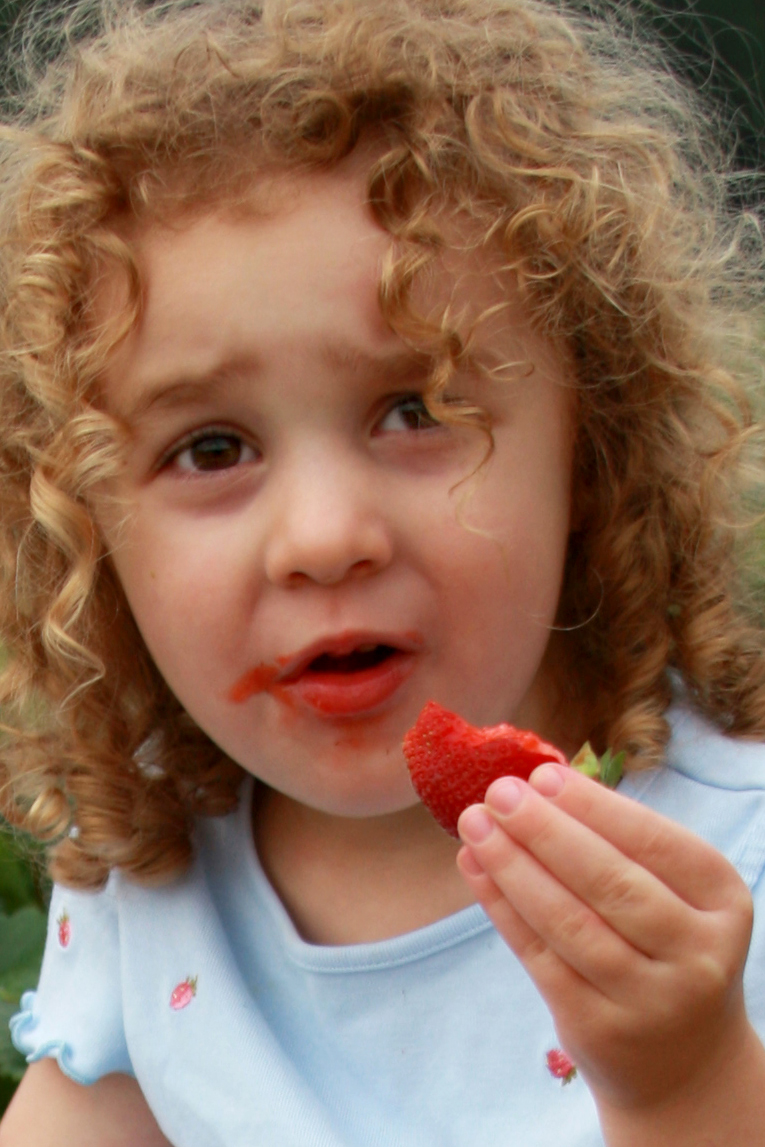Children need after-school snacks. But University of Georgia experts say parents need to help kids make snacking the healthy, safe habit it needs to be.
To supply the energy they need to stay healthy and active, children have to eat more calories and more often, said Jan Baggarly, UGA Cooperative Extension coordinator in Bibb County. Children are growing fast. And they're usually more active than adults.
But parents need to guide children to make healthy snack choices, Baggarly said. To help them do that, keep plenty of healthy snacks on hand.
A nutritious snack provides food from at least one (if not two) foods from MyPyramid, Baggarly said. Snacks can include any food you’d eat for a meal.
"Often, children don't get all the nutrition they need from eating regular meals at breakfast, lunch and dinner, so snacks become essential," she said. "Making healthy snacks available to kids after school is a great way to keep their energy levels up and not spoil their dinner."
But snacks should be planned for, she said. They shouldn't just happen.
Baggarly suggests these nutritious snacks: cheese and crackers, peanut butter and jelly sandwiches, yogurt, hard-boiled eggs, cold cereal, fresh and dried fruits, raw vegetables and dips made from low-fat ingredients, popcorn, graham crackers and vanilla wafers.
“Fruit is an excellent choice because it is packed with nutrients and fiber,” Baggarly said.
You don't have to leave cookies off the list, either. "Cookies and other sugary foods can be offered occasionally or as a special treat but should not replace other, more wholesome foods," she said. “Sugary foods contribute to cavities and obesity. Cakes, cookies and other sweet baked goods should be served as a snack no more than twice a week.”
One way to reduce fat in cookies is by using applesauce in place of shortening when making oatmeal cookies. This alteration alone cuts the fat by one-third.
After-school drinks can add extra calories to a child's diet, too. Baggarly said sugar drinks like Kool-Aid, soft drinks or "fruit drinks" are poor choices for snack time. She suggests offering children water with their snack. Milk is an excellent choice, too.
“Children can get up to 15 percent of their calories and nutrients from snacks, making it important for parents to plan snacks for their children,” Baggarly said.
Parents help their kids make safe choices, too, said Judy Harrison, an Extension food safety specialist with the UGA College of Family and Consumer Sciences.
"Moms and dads need to establish some basic kitchen rules and consider putting them in writing," she said. "For instance, many children begin to use the microwave as early as age seven. But you may not want your child (doing this) unsupervised."
Improper use of a microwave, she said, can cause severe burns. "Teach your children to open packages and remove lids so that steam escapes away from their faces," she said, "and to use pot holders or oven mitts when handling hot foods."
Harrison suggests teaching your children four simple steps to keeping food safe: clean, separate, cook and chill.
* Keep counters and tables clean. Choose someplace else to place books, book bags or anything else that might contaminate food. Always wash hands with soap and warm, running water for at least 20 seconds before touching food. And use clean plates and utensils. Wash fruits and vegetables with cool, running water before you eat them.* Keep raw foods like meats away from ready-to-eat foods.
* If you're warming leftovers, make sure you reheat them to 165 degrees Fahrenheit. Parents should teach their children how to use a food thermometer to check the temperature of cooked food.
* Put refrigerated foods back in the fridge after your snack is ready. If you get the milk out, don't leave it out. Put it back.
Parents can find many microwavable foods at the grocery store that can be great selections for after-school snacks. Look for items like microwavable popcorn ("but hold the butter, please," she said), soft pretzels and even frozen sandwiches. Frozen, microwavable foods like ravioli, spaghetti and other frozen entrees can make nutrient-rich after-school snacks. Select lower fat options from the frozen foods case.
Kids deserve a little refreshment after a hard day at school. “Just make sure your after-school chef follows safe food handling rules and follows the directions for careful preparation,” Harrison said.








